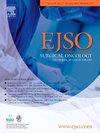From data to Diagnosis: How artificial intelligence is revolutionizing preoperative assessment of thyroid nodules and cancer
IF 3.5
2区 医学
Q2 ONCOLOGY
引用次数: 0
Abstract
Background
Thyroid nodules are frequently detected in the general population, raising concerns about the challenges of overdiagnosis and overtreatment. Artificial intelligence (AI) offers novel solutions for the preoperative evaluation of thyroid nodules. However, there has not yet been a comprehensive literature review on current applications.
Methods
We reviewed the preoperative assessment methodologies for thyroid nodules and delineated the latest advancements in the utilization of sophisticated AI within the preoperative evaluation framework.
Results
AI improves the accuracy of diagnostic procedures in preoperative evaluation of thyroid nodules by enhancing imaging, cytopathology diagnostics, and prognostic assessments. With its ability to automatically process large volumes of imaging and cytopathology data, AI minimizes reliance on clinical experience and reduces the occurrence of errors caused by subjective judgment. Furthermore, AI can integrate diverse data sources, providing a deeper understanding of the underlying value and interaction within the data, thereby enhancing comprehensive disease assessment and prognostic predictions.
Conclusion
The AI-assisted preoperative assessment approach improves diagnostic accuracy and robust evidence for developing individualized treatment strategies.
从数据到诊断:人工智能如何彻底改变甲状腺结节和癌症的术前评估
背景:甲状腺结节在普通人群中经常被发现,这引起了人们对过度诊断和过度治疗的担忧。人工智能(AI)为甲状腺结节的术前评估提供了新的解决方案。然而,目前还没有对其应用进行全面的文献综述。方法回顾了甲状腺结节的术前评估方法,并概述了在术前评估框架内应用复杂人工智能的最新进展。结果通过加强影像学、细胞病理学诊断和预后评估,提高了甲状腺结节术前诊断程序的准确性。人工智能具有自动处理大量成像和细胞病理学数据的能力,可以最大限度地减少对临床经验的依赖,减少主观判断导致的错误的发生。此外,人工智能可以整合不同的数据源,更深入地了解数据的潜在价值和相互作用,从而加强全面的疾病评估和预后预测。结论人工智能辅助术前评估方法提高了诊断准确性,为制定个性化治疗策略提供了有力证据。
本文章由计算机程序翻译,如有差异,请以英文原文为准。
求助全文
约1分钟内获得全文
求助全文
来源期刊

Ejso
医学-外科
CiteScore
6.40
自引率
2.60%
发文量
1148
审稿时长
41 days
期刊介绍:
JSO - European Journal of Surgical Oncology ("the Journal of Cancer Surgery") is the Official Journal of the European Society of Surgical Oncology and BASO ~ the Association for Cancer Surgery.
The EJSO aims to advance surgical oncology research and practice through the publication of original research articles, review articles, editorials, debates and correspondence.
 求助内容:
求助内容: 应助结果提醒方式:
应助结果提醒方式:


